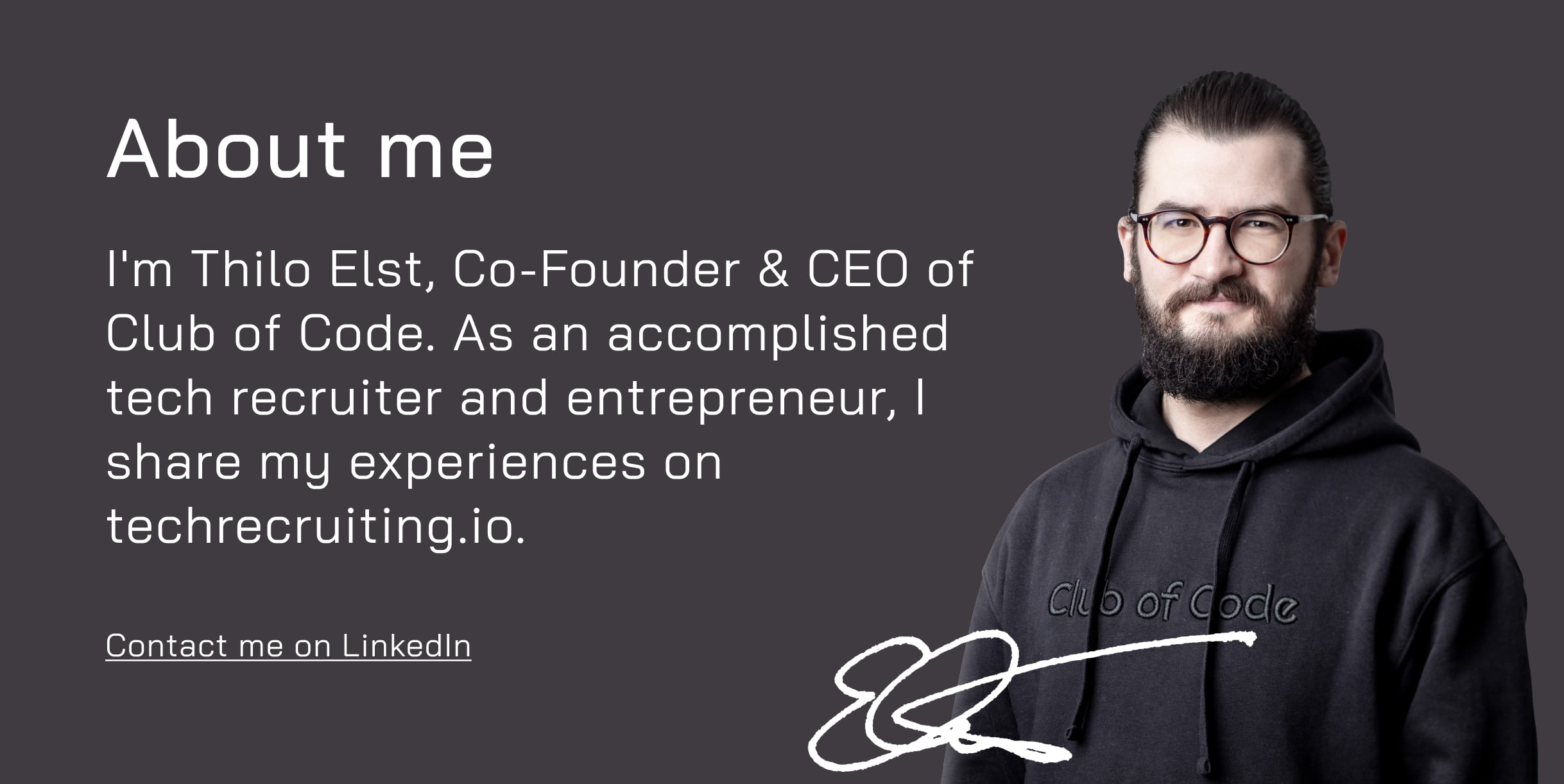If you want to be successful in tech recruiting, there's only one thing you need to understand: the tech stack. The world of technologies and their combinations is the key to successful tech recruiting. This article clarifies what that means exactly and what you need to keep in mind as a tech recruiter.
Definition: What is a Tech Stack?
A tech stack (or technology stack) is the combination of technologies used by a company or developer to develop, operate, and maintain its software applications and services.
What is the composition of a tech stack?
A tech stack typically consists of programming languages, frameworks and libraries. But what do these terms actually mean?
What is a programming language?
A programming language is a special, formal language that allows developers to give written instructions to a computer. To develop a program, website, or other application, programming languages, frameworks, and other technologies are used. Well-known programming languages include C, C++, Java, Python, JavaScript and PHP.
What is a framework?
A framework (also development environment) is a template of ready-made functionalities and structures that simplifies the creation of software applications for developers. Well-known frameworks are, for example, React, Angular and Vue.js in the JavaScript context or Spring and Hibernate in the Java context.
What is a library?
A library (often called a "library") is a collection of code snippets used by developers to avoid having to rewrite that code in every project. This can be, for example, converting a time to a different time zone or editing text. Most of the time, libraries are designed for a specific use case (e.g., working with time and date information) and are therefore used millions of times by developers all over the world.
Tech stack examples
Basically, there is no right or wrong in the tech stack, but there are common combinations that are derived from the significance of the respective technologies. The starting point of a tech stack is the programming language used. The respective options for frameworks and libraries are derived from this.
In the frontend, for example, JavaScript is often used as the programming language. Developers and companies use React, Angular or Vue.js in particular as frameworks. In addition, various libraries, such as jQuery, Chart.js or typeface.js, can be used. And this is how the frontend tech stack results. It could look like this, for example:
JavaScript (programming language) - React (Framework) - MaterialUI, jQuery, Mica.js (Libraries)
There is also a tech stack in the backend. Frontend and backend do not necessarily have to be separated in the tech stack, but it helps to clarify.
The backend tech stack is also dependent on the programming language. Here, the variety of programming languages used is significantly greater than in the frontend. Popular languages are, for example, Python, Java, PHP or Ruby. But JavaScript can also be used for the backend via its framework Node.js. With the programming language as a starting point, there are again various options for frameworks and libraries. Possible combinations are, for example:
Python (programming language) - Django (Framework) - NumPy, TensorFlow (Libraries)
Java (programming language) - Spring (Framework) - JUnit, Mockito (Libraries)
PHP (programming language) - Laravel (Framework) - PHPUnit, Composer (Libraries)
Well-known tech stacks that you may have heard of are MEAN, MERN, MEVN, based on JavaScript, and LAMP, based on PHP. Written out, these mean:
MEAN: MongoDB, Express.js, AngularJS, Node.js
MERN: MongoDB, Express.js, React, Node.js
MEVN: MongoDB, Express.js, Vue.js, Node.js
LAMP: Linux, Apache, MySQL, PHP

Tech Stack: What can you learn for your (tech) recruiting?
You now understand what a tech stack is and how it is composed. But why is this important for you as a (tech) recruiter at all? Because it forms the basis for every developer profile you are looking for. The tech stack always comes first in the search for developers. Only then do you look at other hard and soft skills.
The tech stack that your company and the developers you're looking for use has a hierarchy to it. Understanding this hierarchy will help you source better and talk to the right developers faster.
As a first step, you need to understand what technologies (programming languages, frameworks, libraries) your company or the department you support uses. These have the following hierarchy for you in sourcing:
Programming Language > Framework > Library
The programming language is your most important asset. Since it is not so easy to learn, it is the starting point for your sourcing. Libraries and possibly frameworks are quicker to learn. A good developer can also learn other programming languages and tech stacks, but usually developers prefer to stick to their tech stack and react negatively or not at all to corresponding requests.
Frameworks are another important point for your search for developers. The combination of the right programming language and the right framework is already a very good basis for your sourcing. Libraries are rather a nice-to-have. Since they are easy to learn and there are many of them, they are often not even listed in the profile.
Even if you only find supposedly poorly completed profiles: If they contain the programming language you are looking for and / or the preferred framework, it is worth to be addressed.

FAQ
What is the tech stack "MEAN"?
"MEAN" stands for "MongoDB, Express.js, AngularJS, Node.js" and describes a JavaScript-based tech stack.
What is the Tech Stack "MERN"?
"MERN" stands for "MongoDB, Express.js, React, Node.js" and describes a JavaScript-based tech stack.
What is the Tech Stack "MEVN"?
"MEVN" stands for "MongoDB, Express.js, Vue.js, Node.js" and describes a JavaScript-based tech stack.
